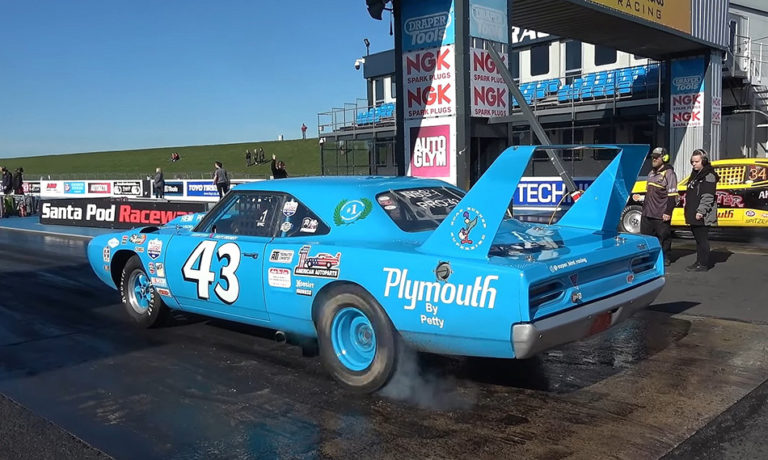In the thrilling world of NASCAR, where speed and precision reign supreme, the 1970 Plymouth Superbird stands as an iconic symbol of dominance on the racetrack. NASCAR, or the National Association for Stock Car Auto Racing, has long been synonymous with high-speed, wheel-to-wheel competition featuring stock cars that push the limits of automotive engineering. During the early 1970s, the Superbird emerged as a remarkable testament to the marriage of aerodynamics and performance in the pursuit of victory.
The genesis of the Plymouth Superbird’s involvement in NASCAR can be traced back to the need for improved aerodynamics. In the quest for enhanced speed and stability, Plymouth, in collaboration with legendary driver Richard Petty’s team, took inspiration from the Dodge Charger Daytona. This collaboration resulted in the creation of the Superbird, a distinctive, aerodynamically enhanced version of the Plymouth Road Runner.

Technical specifications of the 1970 Plymouth Superbird are a testament to its racing prowess. The car featured a sleek, elongated nosecone and a towering rear wing, which dramatically increased downforce and stability at high speeds. Its length measured at 213 inches, with a wheelbase of 115 inches. The distinctive design, including the high rear spoiler, not only contributed to improved aerodynamics but also gave the Superbird a unique and menacing appearance.


Under the hood, the Superbird was equipped with powerful engine options, including the famed 426 Hemi V8 and the 440 Super Commando V8. These engines churned out impressive horsepower, allowing the Superbird to reach top speeds of around 200 mph on the racetrack. The aerodynamic enhancements and robust engines combined to make the Superbird a force to be reckoned with in NASCAR competition.

In the hands of racing legends like Richard Petty and Bobby Isaac, the 1970 Plymouth Superbird became synonymous with success on the NASCAR circuit. Richard Petty piloted the iconic No. 43 Superbird to numerous victories, including a historic win at the 1970 Daytona 500. The car’s dominance on the track and its distinctive appearance made it an enduring symbol of NASCAR’s golden era.

The 1970 Plymouth Superbird’s fame extends beyond the checkered flag, earning its place in automotive history as a groundbreaking and visually striking race car. Today, enthusiasts and collectors treasure the Superbird for its unique design, historical significance, and its role in shaping the landscape of NASCAR during a time when innovation and speed reigned supreme on the American racetracks.

Read more about 1971 Plymouth Cuda RTS


